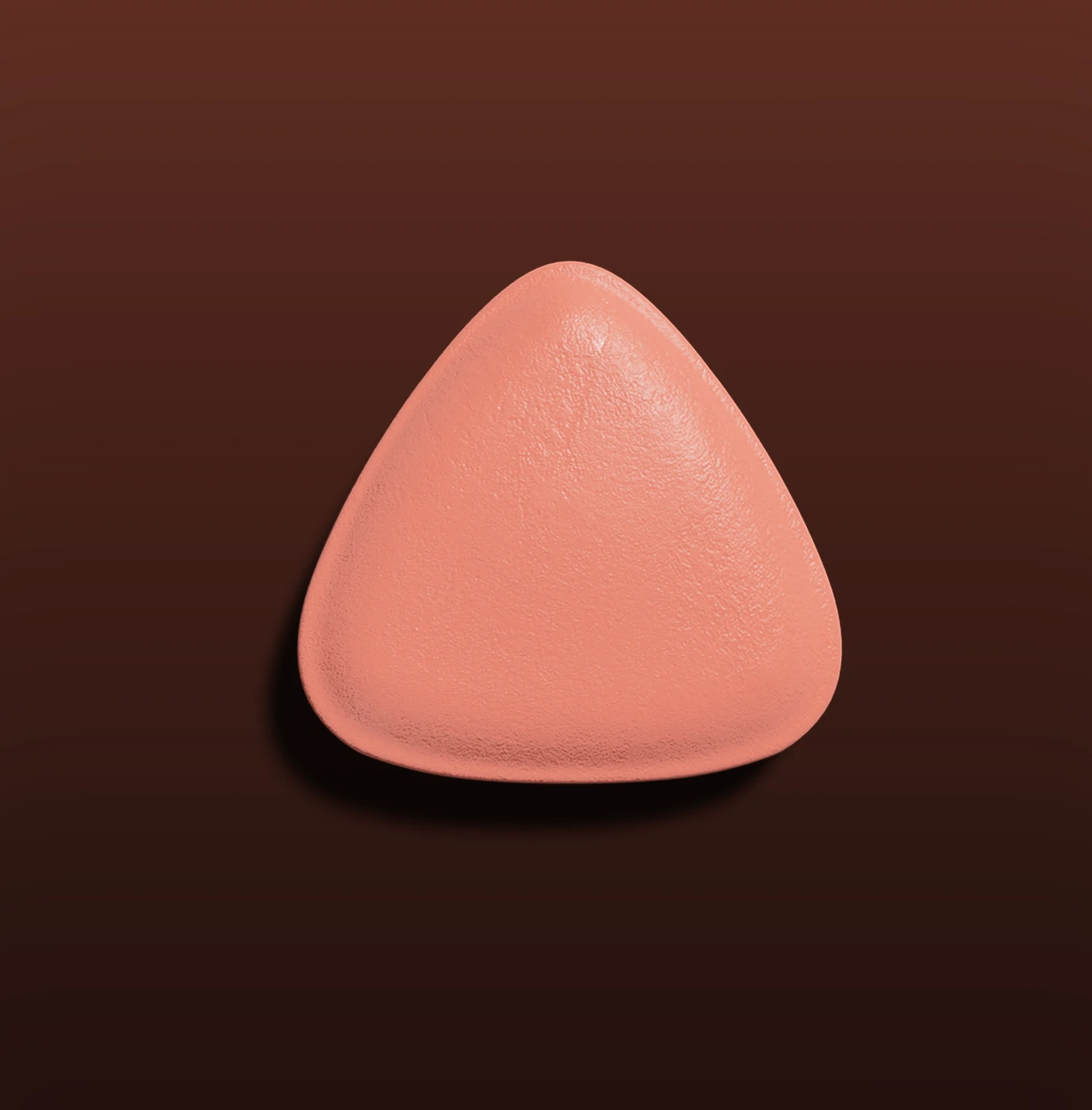Contents
Erectile dysfunction (ED) is often seen as a condition that only affects older men, but recent studies have shown that ED is impacting men of all ages, even those in their 20s and 30s. It is true that ED is especially prevalent in old age, due to changing hormone levels, underlying conditions, medications, and specific risk factors that increase in old age, including hypertension, diabetes, and obesity. (Gareri, 2014) However, many of these factors can also lead to ED earlier in life. Some research even suggests that habits such as problematic pornography usage may be contributing to this spike in early ED diagnoses. (Jacobs, 2021) (Grubbs, 2019)
So what is the real relationship between age and erectile dysfunction, and why are more young people being impacted? Let’s find out.
Common Misconceptions About ED
First, let’s clear up a few common misconceptions about ED symptoms and causes. Many believe that ED refers to the complete inability to get an erection, but there are many ways that ED manifests (Lue, 2017):
Some can get an erection sometimes, but not every time they want to have sex.
Some can get an erection but have difficulty maintaining it long enough for sexual activity.
In some cases, someone may be unable to get an erection at any time.
Additionally, ED can be caused by a number of factors that are not dependent on age (Cleveland Clinic, 2023):
Mental health conditions
Prescription medications, including steroids (find out to avoid ED on steroids)
Lifestyle habits and factors, including smoking, alcohol, drug use, and obesity
Underlying conditions
Injury or structural conditions
The Growing Concern: ED in Younger Adults
While ED is still most common in men between the ages of 40 and 70 (occurring in nearly 50% of this age group), studies show that younger adults are also experiencing symptoms of ED. (Cleveland Clinic, 2023) (Papagiannopoulos, 2014) One global study found that about 8% of men aged 20 - 29 years experienced ED symptoms, and 11% of those aged 30 to 39. (Rastrelli, 2017)
Key Factors Contributing to ED in Younger Adults
The causes of ED in younger men can range from poor lifestyle choices to mental health struggles, and even the overuse of substances. The implications are significant—not only in regard to self-esteem but for relationships and overall quality of life. Let’s review some of the major causes of ED in young men.
Mental Health Conditions
Psychogenic ED refers to the inability to achieve or maintain an erection due to psychological factors-- those impacting your thoughts, behaviors, and feelings. Many researchers believe that most young men who experience ED are struggling with psychogenic causes. (Papagiannopoulos, 2014) Some common examples of this include stress, depression, anxiety, and other mental health conditions.
Stress can be a significant problem in younger men, particularly stress related to work, relationships, and societal expectations. Studies show that stress hormones like cortisol can interfere with the body’s ability to achieve or maintain an erection. (Rahardjo, 2023) Learn how to navigate ED in a new relationship.
Anxiety and depression are also major players. Performance anxiety, the fear of not being able to perform sexually, can create a vicious cycle of tension that only exacerbates ED. Additionally, depression can lead to low self-esteem, low libido, and can lead to hormonal changes such as decreased dopamine. (Cleveland Clinic, 2023)
With such a stigma surrounding mental health, particularly in younger men, it is no surprise that more young people are showing signs of ED. It’s vital that we encourage more discussion around mental health and wellbeing.
Unhealthy Lifestyle Choices
Poor lifestyle habits, such as unhealthy eating, lack of exercise, and excessive alcohol intake can all contribute to the development of ED. (Lue, 2017) Obesity, in particular, is a significant risk factor for ED. Excess weight can lead to a range of health issues, including diabetes, high blood pressure, and heart disease, all of which have been linked to erectile dysfunction. Diets rich in unhealthy fats and sugars can also disrupt hormone levels, which may influence sexual health. (Ferramosca, 2022) Learn how to tread ED caused by diabetes.
Substances: Alcohol, Smoking, and Drug Use
Smoking, heavy alcohol use, and recreational drug use have long been linked to erectile dysfunction. (Cleveland Clinic, 2023) (Lue, 2017) Illicit drugs such as cocaine, marijuana, and opioids have all been found to interfere with normal sexual function, and their effects can persist even after the substances are no longer in the body. In addition to the direct impact on sexual health, substance abuse can contribute to psychological stress and anxiety, further complicating the problem.
Pornography Use
Another factor contributing to ED among younger men is the increasing accessibility and use of pornography. Studies have shown that frequent consumption of pornography can impact sexual health and relationships in multiple ways (Jacobs, 2021) (Jhe, 2023):
Violence and aggression: Those who regularly view pornographic material are at a higher risk of exhibiting sexual aggression and domestic violence.
High risk activities: Pornography may also lead to increased high risk activities, including casual sex with multiple partners and substance use during sex.
Sexual dysfunction: Some research suggests that problematic pornography usage is associated with a higher risk of experiencing ED.
This is a multifaceted topic that requires more research, but it’s clear that consistent and problematic use of pornography does lead to significant impacts on sexual health and relationships.
The Importance of Addressing ED Early
ED can lead to strained relationships, poor self-esteem, and unsatisfying sexual experiences. Fortunately, there are ways to address and treat ED in men of all ages. For those experiencing ED early on, addressing the issue as soon as possible is key for gaining control over your sex life.
Whether the cause is physical, psychological, or a combination of both, addressing the issue head-on can improve sexual health and overall quality of life. There are various treatment options available, including lifestyle changes, therapy, and medical treatments. Here are a few steps that can help manage and prevent ED (Cleveland Clinic, 2023) (Lue, 2017):
Consult a healthcare professional: If ED becomes a persistent issue, seeking professional advice is key. A doctor can help identify underlying health conditions and recommend the appropriate treatment. It’s important that you remain open and honest with your provider, including your pornography use, mental health, relationship stress, and more.
Prioritize mental health: Addressing mental health issues, such as anxiety or depression, can significantly improve sexual function. Therapy, stress management techniques, and medications can all be helpful tools. Consider speaking to a therapist online or a couple’s therapist if you are experiencing relationship stress.
Adopt a healthy lifestyle: Regular exercise, a balanced diet, and reducing substance use are essential for improving sexual health.
Consider medical ED treatments: There are many medical treatment options available for those with ED, including prescription medications, surgery, pump devices, and more. Speak with your provider about what option is right for you.
Remember that many people will struggle with ED or another form of sexual dysfunction at some point in their lives. You are not alone, and you should never feel ashamed or embarrassed to reach out for help.
Regain Your Roar with Rugiet
Rugiet Ready offers chewable and sublingual medications that treat ED using tadalafil (Cialis®), sildenafil (Viagra®), and apomorphine, a dopamine promoter that targets psychogenic ED. Whether you’re looking for a long-lasting daily option to help you regain your mojo, or an as-needed, quick-onset medication that targets both your brain and body, we’ve got you covered. Best of all, Rugiet products can be ordered online and are tailored to your specific needs and health.
Explore Rugiet products, or get connected to a provider online today!
Citations:
Gareri, P., Castagna, A., Francomano, D., Cerminara, G., & De Fazio, P. (2014). Erectile dysfunction in the elderly: an old widespread issue with novel treatment perspectives. International journal of endocrinology, 2014, 878670. https://doi.org/10.1155/2014/878670
Jacobs, T., Geysemans, B., Van Hal, G., Glazemakers, I., Fog-Poulsen, K., Vermandel, A., De Wachter, S., & De Win, G. (2021). Associations Between Online Pornography Consumption and Sexual Dysfunction in Young Men: Multivariate Analysis Based on an International Web-Based Survey. JMIR public health and surveillance, 7(10), e32542. https://doi.org/10.2196/32542
Grubbs, J. B., & Gola, M. (2019). Is Pornography Use Related to Erectile Functioning? Results From Cross-Sectional and Latent Growth Curve Analyses. The journal of sexual medicine, 16(1), 111–125. https://doi.org/10.1016/j.jsxm.2018.11.004
Tom Lue, M.D. July 2017. National Institutes of Health. Symptoms & Causes of Erectile Dysfunction. https://www.niddk.nih.gov/health-information/urologic-diseases/erectile-dysfunction/symptoms-causes
Cleveland Clinic. August 28 2023. Erectile Dysfunction. https://my.clevelandclinic.org/health/diseases/10035-erectile-dysfunction
Papagiannopoulos, D., Khare, N., & Nehra, A. (2015). Evaluation of young men with organic erectile dysfunction. Asian journal of andrology, 17(1), 11–16. https://doi.org/10.4103/1008-682X.139253
Rastrelli, G., & Maggi, M. (2017). Erectile dysfunction in fit and healthy young men: psychological or pathological?. Translational andrology and urology, 6(1), 79–90. https://doi.org/10.21037/tau.2016.09.06
Rahardjo, H. E., Becker, A. J., Märker, V., Kuczyk, M. A., & Ückert, S. (2023). Is cortisol an endogenous mediator of erectile dysfunction in the adult male?. Translational andrology and urology, 12(5), 684–689. https://doi.org/10.21037/tau-22-566
Ferramosca, A., & Zara, V. (2022). Diet and Male Fertility: The Impact of Nutrients and Antioxidants on Sperm Energetic Metabolism. International journal of molecular sciences, 23(5), 2542. https://doi.org/10.3390/ijms23052542
Jhe, G. B., Addison, J., Lin, J., & Pluhar, E. (2023). Pornography use among adolescents and the role of primary care. Family medicine and community health, 11(1), e001776. https://doi.org/10.1136/fmch-2022-001776


